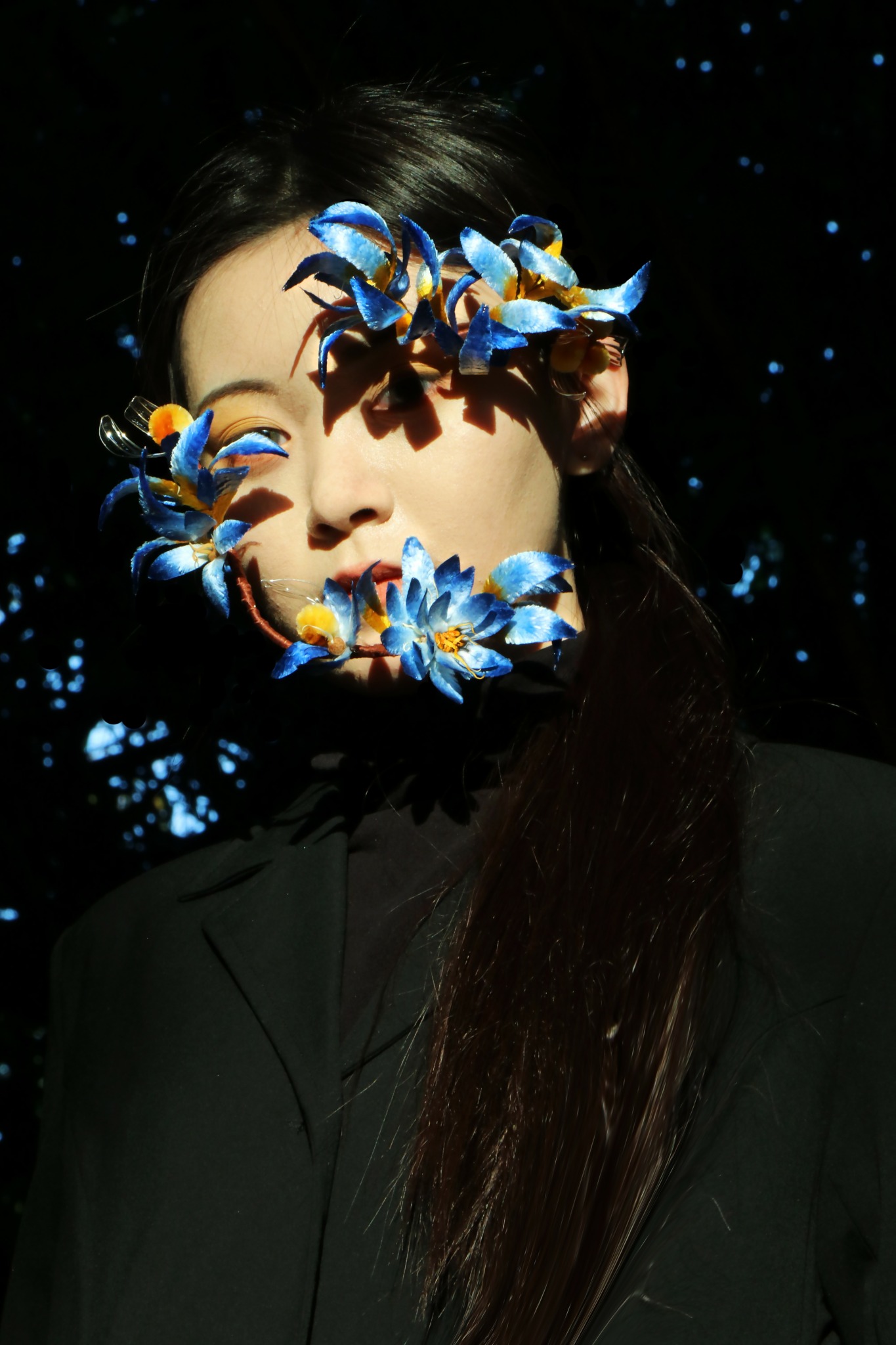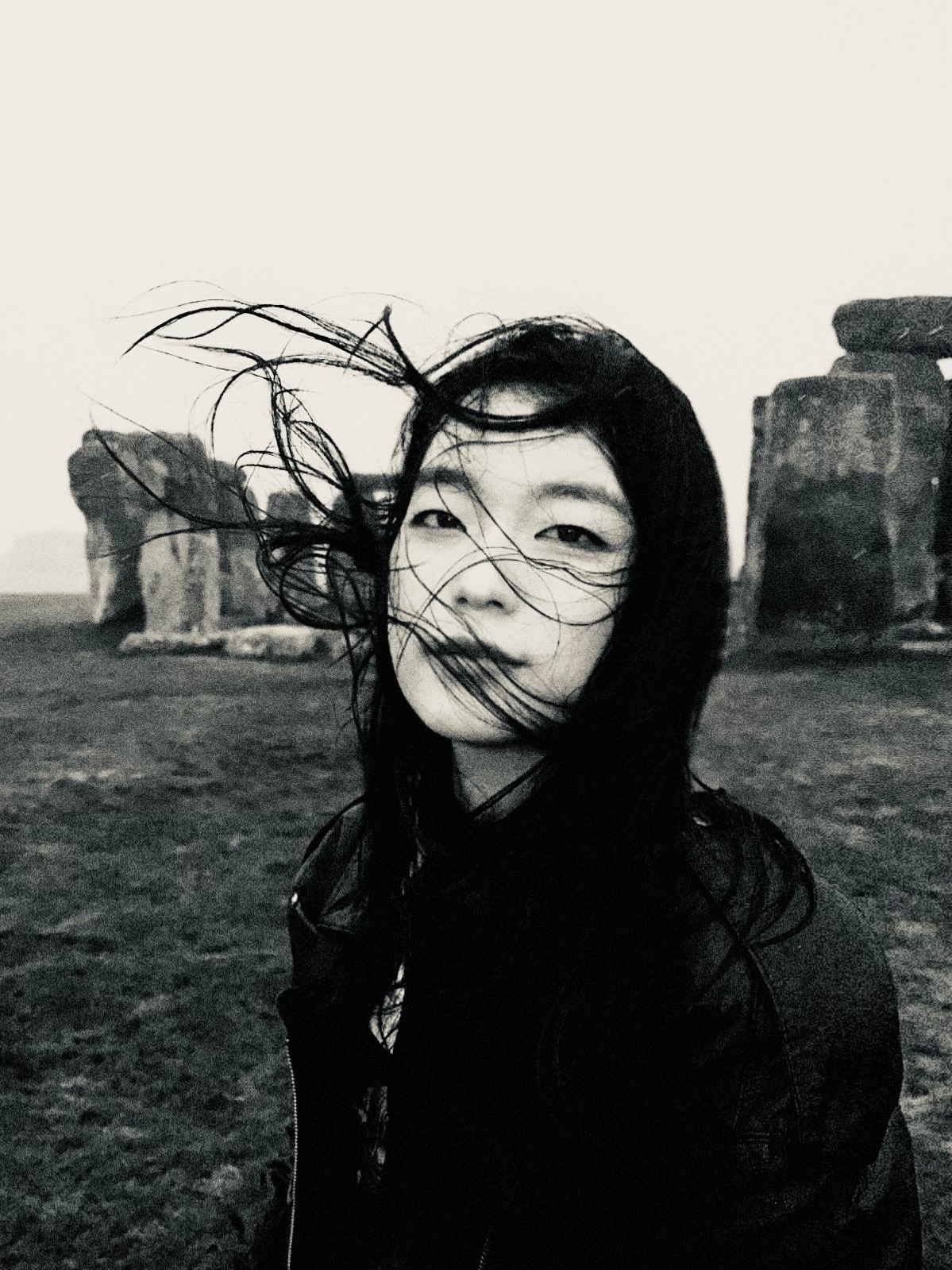Alright – so today we’ve got the honor of introducing you to Yusi Wang. We think you’ll enjoy our conversation, we’ve shared it below.
Yusi, thanks for joining us, excited to have you contributing your stories and insights. Can you talk to us about a project that’s meant a lot to you?
I have a project called “Hidden Money”. This series of works originates from my grandmother. When I was young, she once did something that deeply inspired me, prompting me to reflect on the profound impact of human behaviour and craftsmanship on our lives, as well as the wide-ranging effects of the non-traditional use of materials. In my childhood, my grandmother had a unique talent—she cleverly used old, no longer wearable socks to make small wallets. Each wallet appeared worn, full of the marks of time, and could be described as “ugly,” yet my grandmother insisted they were both durable and convenient. When I was younger, I felt embarrassed by these less-than-attractive wallets and indeed was teased because of them, so much so that I was reluctant to show them to others. Every time I made a payment, I would secretly take the money out of my pocket to avoid drawing attention.
However, over the past twenty years, these unattractive “sock wallets” have become an indelible part of my memory, as well as a bond connecting me with my grandmother, gradually becoming an emotional conduit between one generation and the next.
Years later, as I became a designer, it was precisely because of my grandmother’s clever transformation of these old socks into wallets that they were no longer just containers for money, but rather symbols of how any inconspicuous material or object could possess extraordinary utility in life. I then realised that this was exactly what I had been pursuing all along. Through countless creative attempts and photography sessions, I continuously explored unique angles and unconventional forms of expression, searching for my own distinct creativity, and dedicated myself to breaking “boundaries.” I believe this is also the goal many contemporary designers seek—to break the boundaries of creation through interdisciplinary collaboration and innovative material applications.
If my grandmother’s actions initially stemmed from a consideration of waste recycling and environmental consciousness, then one could also say she possessed a unique creativity that inadvertently altered the properties of objects. It was precisely this unconscious behaviour that added a sense of mystery to the whole process, deepening the meaning of design. With an innocent and unconscious heart, my grandmother engaged in a fascinating creative process. This marvellous experience profoundly inspired me, leading me to reflect on the close relationship between fashion jewellery and humility. Thus, I began to express humility through contemporary jewellery and explore its role in the fashion field.
Throughout the entire series of works, I continuously explored the “sock wallets” of my childhood, eventually extracting various abstract shapes from them, then using the cyanotype technique to transfer the sock’s texture onto recycled fabrics. The old and worn fabric, softened by long periods of friction against the skin, fascinated me, and through the process of repeated creation and exhibition, I constantly revisited my memories and received feedback from others.
“Repetition and memory are the same movement, yet they unfold in opposite directions; because what people recall is what has already been, it is a backward-looking repetition; while repetition in its original sense is a forward-looking recollection.” I attempt to present the beautiful things in my memory that are closely linked to emotions, the materials, forms, and details that have been “warmed by the skin,” as well as the functional “image” experiences they evoke, in a perceptible, tactile, and visual manner. For me, this is a new form of creation and repetition.


Great, appreciate you sharing that with us. Before we ask you to share more of your insights, can you take a moment to introduce yourself and how you got to where you are today to our readers.
My transition into jewelry design was a serendipitous opportunity. Initially trained in graphic design, I participated in a jewelry-making workshop by chance, where I encountered the stark contrast between the three-dimensional thinking required for jewelry design and the two-dimensional perspective of graphic design. This shift not only broadened my creative vision but also deepened my understanding of the meticulousness and foresight essential in the creative process.
I became fascinated by the intricate craftsmanship involved in jewelry design and the transformation of abstract concepts from flat, two-dimensional sketches into tangible, three-dimensional objects. This realization brought me a profound sense of accomplishment and shortened the emotional distance between my creations and their audience. Jewelry, as a form of physical art, enables direct interaction through touch and sight, imbuing designs with deeper meaning and emotional resonance.
Building on this experience, I decided to embark on a new journey during my postgraduate studies to explore jewelry design from the ground up. My aim is to integrate the knowledge and skills from graphic design into this new discipline, exploring their intersections to expand my artistic capabilities and modes of expression.
My work seeks to evoke cherished memories deeply connected to emotions through jewelry design. I hope to enable viewers to perceive and feel the textures, forms, and details that have been “warmed by the skin,” forging a unique bond between art and emotion. For me, creating jewelry is not merely about craftsmanship but also an artistic endeavor to materialize inner sentiments. Through my creations, I aim to present those beautiful memories intertwined with emotions and the tactile experiences they evoke in a way that is perceptible through touch and sight, creating a new form of creation and repetition.
I believe contemporary art is an “art of disruption,” challenging traditional criteria and encouraging new ways of viewing the world. However, this disruptive nature often alienates audiences, making contemporary art difficult to approach and understand. As a jewelry artist, I aim to use jewelry as an accessible entry point into contemporary art, blending the wearability and familiarity of traditional jewelry with the unconventionality and criticality of contemporary practices. By drawing attention to my work through its appearance, I hope to guide viewers into understanding the stories and inspirations behind the pieces, gradually fostering an acceptance of contemporary art’s rebellious and thought-provoking nature. This interplay of ideas and perspectives lies at the core of what I aim to communicate through my work.
In my creations, the combination of fabric and metal is central. My use of fabric often comes from recycled materials, reimagining items that were once considered old or insignificant. Jewelry, in my view, is inherently “radiant,” much like beautiful clothing that captures attention. However, I deliberately choose materials that are deemed unattractive or outdated, starting with discarded fabrics and overlooked items that carry human warmth and emotional connections. By reintroducing these materials into the spotlight, I aim to reinterpret their significance, offering a new perspective on how we relate to objects in our search for emotional and spiritual belonging.
Humility forms the foundation of my creative process. It is evident in my choices of materials, methods of handling them, and approach to design. I believe that maintaining an open mindset allows me to embrace more possibilities, driving innovation in my work. Every creation is a journey to explore the potential of materials and push the limits of craftsmanship. Through these works, I hope to encourage viewers to reassess everyday materials and objects, discovering their hidden beauty and value. For me, humility is not only a respect for materials and techniques but also a profound understanding of the creative process itself. This humility enables me to push the boundaries of traditional jewelry design, exploring new forms of expression and visual languages. In my work, humility serves as the cornerstone of innovation, allowing me to find unique means of expression in the intersection of tradition and modernity within jewelry design.


What’s the most rewarding aspect of being a creative in your experience?
For me, as an artist or creator, the most valuable aspects lie in the integration of originality, emotional resonance, intuitive insight, and the ability to discern quality.
Originality is at the core of artistic creation. It is not only the extension of one’s unique ideas but also a reinterpretation and reconstruction of the world. Every act of creation involves breaking and reshaping existing rules, and this exploration demands the courage to follow one’s inner voice, free from the constraints of societal expectations or others’ judgments. It requires a willingness to embrace the unknown and uncertainty.
Emotional resonance gives life to art. Art is not merely a visual or material presentation; it is a medium for conveying emotions. A creator must deeply understand both their own and others’ emotions and translate this understanding into works that evoke a sense of connection. By capturing subtle emotional nuances, an artist can communicate in a silent yet profound way, enabling their work to transcend personal experiences and reach a broader audience on a shared emotional level.
Intuitive insight is an indescribable yet essential ability. Intuition involves not only those moments of inspiration but also a keen sensitivity to materials, forms, and creative directions. This capacity is honed through continuous practice and experience, eventually becoming an innate sense that allows an artist to quickly discern what feels “right” and what is “worth further exploration” during the creative process.
The ability to discern quality is critical for transforming inspiration into reality. As creators, we must have confidence in our work while maintaining a critical perspective, rigorously examining every decision we make. This ability is rooted in a deep understanding of craftsmanship, form, aesthetics, and concepts, while also requiring the openness to absorb new knowledge and avoid complacency. The ability to recognize when something is “good enough” or when it needs to “go further” is a vital skill for achieving excellence.
Moreover, growth as a creator is an unending journey. Art is not only about improving technical skills but also about continuously exploring one’s inner world and the external environment. This process demands unwavering belief in oneself, coupled with the courage to constantly push boundaries and embrace new possibilities. It is through this ongoing learning and innovation that the essence of being an artist truly lies.
In summary, the value of artistic creation extends beyond the work itself. It resides in the multidimensional practice of originality, emotion, intuition, and discernment, transforming personal thoughts and feelings into a force that inspires, moves, and influences others.


Are there any resources you wish you knew about earlier in your creative journey?
During the creative process, what I wish I could learn about earlier are the works of different artists, exhibition opportunities across various platforms, and feedback from different audiences. Artistic creation is not only an expression of one’s inner world but also an interaction and exchange with the external world. By exploring the works of other artists, I can gain more inspiration and broaden my creative vision, enriching my artistic language and forms of expression. Knowledge of exhibition opportunities can provide a platform to showcase my work, allowing it to connect with a wider audience and expand its influence.
At the same time, I place great importance on the feedback received during the creative process, especially critiques and suggestions from viewers and peers. Art is a two-way communication, and feedback from the audience helps me to view my work from an external perspective, stimulating further reflection and improvement. I firmly believe that critical thinking and self-reflection are the driving forces behind continuous artistic progress. Therefore, exchange and critique are indispensable parts of my creative process, as they help me overcome creative obstacles and, through ongoing discussion and revision, enhance the depth and expressiveness of my work.
Contact Info:
- Instagram: @yusi2499


Image Credits
All images are by the artist


